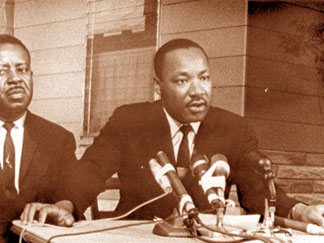

Dear Fellow Americans:
My name is Richard P. Burton, Sr., of Jacksonville, Fla. and formerly of Allentown, PA. I served as president of the Allentown, Pa. NAACP for 15 years, represented Northeast Region II on the NAACP National Board of Directors for 12 years, president of the Pennsylvania State NAACP and I have been a community and civil rights activist for over 45 years.
A committee was formed to bring to fruition a Civil Rights Museum in St Augustine and I was appointed as chairman and now the committee is chaired by a gifted young woman; Elizabeth Duncan, born, raised and resides in St. Augustine, Fla.
After a few weeks into this position, I met with individuals within St. Augustine and St. Johns County communities to study the conditions surrounding the St. Augustine Civil Rights Movement, including the history of the African American community. The St. Augustine Movement was a civil rights movement that took place in St. Augustine, Florida in 1963 –-1964. It was part of the wider African American Civil Rights Movement. It was a major event in St. Augustine’s long history and played a major role in the passage of the Civil Rights Act of 1964.
Efforts by African Americans to integrate the public schools and public accommodations such as lunch counters, hotels, and motels were met with arrests and Ku Klux Klan violence. Non-violent protesters were arrested for participating in peaceful picket lines, sit-ins, wade-ins, and marches. Homes were fire-bombed, Black leaders were assaulted, threatened with death, and fired from their jobs.
In the spring of 1964, St. Augustine civil rights leader Dr. Robert Hayling asked the Southern Christian Leadership Conference (SCLC) and its leader, Rev. Martin Luther King, Jr. for assistance. From May until July 1964, they carried out marches, sit-ins, and other forms of peaceful protest in St. Augustine. Nearly 50 years since the movement, St. Augustine and St. Johns County is listed as model communities to live in.
However, in 2013 the city of St. Augustine and St. Johns County do not have any African American elected officials and the African American business community is also dismal.
As it relates to getting support for the planned civil rights museum and the site to help celebrate the 50th Anniversary of the 1964 Civil Rights Act, most members of the political, civil rights and religious communities, both Black and white, failed to lend support. Members of the Florida US Senate, Congress, Florida Government, St. Johns County, St. Augustine City, the state and national NAACP, the state and national SCLC, just to mention a few, were asked for support, but to no avail.
Several potential sites for the museum were looked at and the committee was met with political roadblocks. Shortly after, another possible museum site identified was the Rudcarlie Building, at 79 Bride Street built in the 1950’s by Dr. Rudloph N. Gordon: named for members of his family. Rudolph, Carlotta, and Rosalie. It was the first medical/dental office constructed in St. Augustine without racially segregated waiting rooms. After Dr. Gordon’s death, the office was rented to Dr. Robert B. Hayling, a dentist who became a prominent leader of the civil rights movement in St. Augustine. Many of the planning sessions for the movement were held there, with Dr. Martin Luther King, Jr. and others.
Forty-nine years later from the time Dr. Martin Luther King Jr. arrived in the nation’s oldest city, all is not well for the African American citizens. Yes, they can go into the restaurants, sit at any lunch counter, go to the beaches, stay in the local hotels, and even swim at the two local public swimming pools, but as far as economic development in the African American communities, it is null and void. I believe there is a consorted effort to wipe out the very existence of the Black communities in St. Augustine/St. Johns County. Those who own or have owned property in St. Johns County are losing it because of inflated market values of their homes which increased the tax base, therefore making it impossible to pay the exorbitant rates. After three years, the homes are being sold on the courthouse steps for pennies on the dollar.
Now the world will focus its eyes on St. Augustine/St. Johns County in 2014: commemorating the 50th Anniversary of the signing of the Landmark 1964 Civil Rights Act and one will now see the market values of some of the older homes going down—but all too late for those who lost their houses and land through no-fault of their own. Racism, greed, and covetousness, are still alive in Dodge City. If something is not done, and soon, it may take another 50 years to make any strides towards equality and economic development for the disenfranchised Blacks in St. Johns County.
“Darkness cannot drive out darkness: only light can do that. Hate cannot drive out hate: only love can do that.” — Dr. Rev. Martin Luther King, Jr.
Keep Hope Alive,
Minister Richard P. Burton, Sr.


Be the first to comment